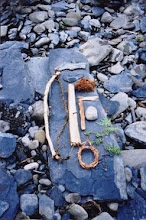This is a short video I did of a plant I passed when running every day.
As my grandfather raised horses and sold feed to the state fairgrounds and the thoroughbred racing circuit at the county fairs for years and years, I knew alfalfa mostly as heavy bales to move into barns once we sold them. I was a delivery boy, basically, but it was fun doing the work and loading or unloading the trucks.
But alfalfa has been cultivated for fodder for cows, sheep, horses, mules, donkeys and goats, for thousands of years. The ancient Greeks and Romans used it and wrote about it thousands of years ago. The root system on this pea family plant can reach 15 meters, (over 40 feet!) so it's good in dry areas. It is an amazing plant. It harbors many insects and bees, and is known among agricultural plants as an 'insectory'! That's good news for bees and lots of other beneficial bugs. It's best to mow strips in the alfalfa rather than the whole field, because it keeps those insects from being completely without habitat, so that is a great practice that some farmers use to maintain their crops AND keep those helpful insects going on the farm.
The interesting thing about this flower has to do with how it gets pollinated. The part of the flower that has the pollen is called the 'keel', (like the bottom of a ship) and evidently it hits the bee in the head when it comes inside to sip nectar. The blow spreads the pollen onto the bee which then carries it flower to flower. However, the western honey bee doesn't like getting hit in the head, so as it gets older and smarter, it starts to sip nectar on the side, and avoids getting hit. So in big alfalfa areas, the pollinators are usually the younger bees, or some different bees that don't mind getting hit. Which is pretty cool. Many alfalfa farmers offer special habitat for those bees, too, to encourage their presence in their fields...
There is a lot of different things that I have learned about this plant that you can find, but one of the most interesting is about how some Jain Veganism people can't eat any mushrooms, so they use alfalfa sprouts to get their Vitamin D, which they say is present in alfalfa sprouts, although that hasn't been determined yet....
Anyway, the field I run by got cut before I could take a lot of pictures, but I totally love this plant and how it feeds so many animals in our world...
And I love bees!






















